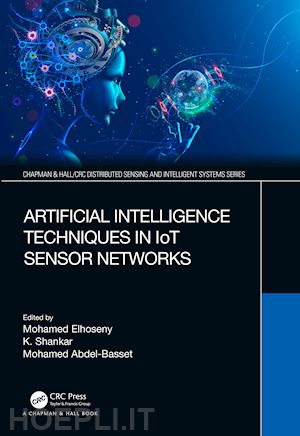Dr. Mohamed Elhoseny is an Assistant Professor at the Department of Computer Science, College of Computer & Information Technology, American University in the Emirates (AUE). Dr. Elhoseny is an ACM Distinguished Speaker and IEEE Senior Member. He received his Ph.D. in Computers and Information from Mansoura University/University of North Texas through a joint scientific program. Dr. Elhoseny is the founder and the Editor-in-Chief of IJSSTA journal published by IGI Global. Also, he is an Associate Editor at IEEE Journal of Biomedical and Health Informatics, IEEE Access, Scientific Reports, IEEE Future Directions, Remote Sensing, and International Journal of E-services and Mobile Applications. Moreover, he served as the co-chair, the publication chair, the program chair, and a track chair for several international conferences published by recognized publishers such as IEEE and Springer. Dr. Elhoseny is the Editor-in-Chief of the Studies in Distributed Intelligence Springer Book Series, the Editor-in-Chief of The Sensors Communication for Urban Intelligence CRC Press-Taylor& Francis Book Series, and the Editor-in-Chief of The Distributed Sensing and Intelligent Systems CRC Press-Taylor& Francis Book Series. K. Shankar is currently a Postdoctoral Fellow with Department of Computer Applications, Alagappa University, Karaikudi, India. He has authored/coauthored over 54 ISI Journal articles (with total Impact Factor 150+) and more than 100 Scopus Indexed Articles. He has guest-edited several special issues at many journals published by SAGE, TechScience, Inderscience and MDPI. He has served as Guest Editor and Associate Editor in SCI, Scopus indexed journals like Elsevier, Springer, IGI, Wiley & MDPI. He has served as chair (program, publications, Technical committee and track) on several International conferences. He has delivered several invited and keynote talks, and reviewed the technology leading articles for journals like Scientific Reports – Nature, the IEEE Transactions on Neural Networks and Learning Systems, IEEE Journal of Biomedical and Health Informatics, IEEE Transactions on Reliability, the IEEE Access and the IEEE Internet of Things. He has authored/edited Conference Proceedings, Book Chapters, and 2 books published by Springer. He has been a part of various seminars, paper presentations, research paper reviews, and convener and a session chair of the several conferences. He displayed vast success in continuously acquiring new knowledge and applying innovative pedagogies and has always aimed to be an effective educator and have a global outlook. His current research interests include Healthcare applications, Secret Image Sharing Scheme, Digital Image Security, Cryptography, Internet of Things, and Optimization algorithms. Mohamed Abdel-Basset received the B.Sc., M.Sc., and Ph.D. degrees in information systems and technology from the Faculty of Computers and Informatics, Zagazig University, Egypt. His current research interests are optimization, operations research, data mining, computational intelligence, applied statistics, decision support systems, robust optimization, engineering optimization, multiobjective optimization, swarm intelligence, evolutionary algorithms, and artificial neural networks. He is working on the application of multiobjective and robust meta-heuristic optimization techniques. He is also an/a Editor/reviewer in different international journals and conferences. He has published more than 150 articles in international journals and conference proceedings. He holds the program chair in many conferences in the fields of decision making analysis, big data, optimization, complexity, and the Internet of Things, as well as editorial collaboration in some journals of high impact.











